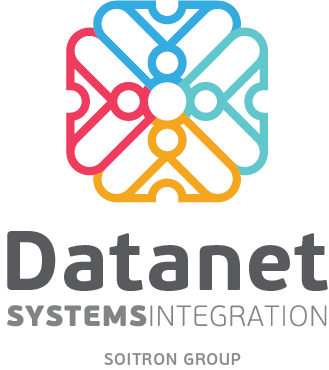
Hospitals are increasingly using telepresence solutions to access external resources and improve the collaboration of medical teams. Datanet specialists have developed and implemented a telemedicine solution with a flexible architecture that can be personalized to the specific of medical units in Romania.
At the beginning of 2010, telepresence was considered a necessary technology and also accessible only to large organizations. The existence of several subsidiaries, branches, and work points justified the adoption, and the return on investment was mainly ensured by reducing the cost of moving employees.
Things have changed radically with the widespread use of smartphones and tablets for professional purposes. The rapid increase in the number of mobile employees forced companies to look for solutions to increase the efficiency of teamwork, and telepresence has become an increasingly popular option. It is also visible in how the telepresence solutions market is evolving, its size is estimating to double by 2024 when it will reach a volume of about $ 20 billion – according to Global Market Insights.
Hospitals “rediscover” technology
Mobility has irreversibly affected the health sector, smartphones, and tablets being used by physicians frequently to effectively carry out the medical act. As a result, more and more hospitals are using telepresence solutions to meet the challenges generated by:
- increasing the mobility of staff;
- a limited number of specialists available in niche areas;
- wider use of consultations conducted in collaboration with external experts;
- increased number of cases in which patients exercise their right to seek a second opinion.
There are current needs for most medical units but reaching a critical level in Intensive Care Units, where the speed at which decisions are made and medical interventions are performed is decisive in decreasing morbidity and mortality. On the other hand, the validity of these long-term decisions often requires the collaboration of several medical specialties. All of these factors also have an important economic component – care and treatment for patients in Intensive Care Units represent about one-third of the total cost of hospitalization.
How does a complete telemedicine solution look like
Datanet Systems’ response to these cumulative challenges is a dedicated telemedicine solution that integrates advanced telepresence technologies and a video surveillance system into a unique architecture. The Datanet solution is already used in the Newborn Intensive Care Unit of the Marie Sklodowska Curie Emergency Clinical Hospital for Children. You can read HERE the case study and watch the video presentation of the project done by our colleague Cornel Chirculete, Technical Director at Datanet Systems.
The telepresence system allows staff from Intensive Care Units to communicate audio-video with physicians outside the hospital wherever they are located. In order for the interaction to achieve the desired effect, the system is designed so that the interlocutors can benefit from live patient images and real-time access to their monitoring data, as well as other specific medical documents. (Data is delivered securely and is accessible from any type of mobile device.) Doctors and staff at UTI have a solution that simplifies joint decision making, performing supervision procedures, and performing remote interventions, in real-time.
Adding to the “equation” the video-surveillance system comes as a response to another critical requirement of intensive care units, where effective patient care requires the allocation of human resources based on the urgency and critical level of the situation. The system developed by Datanet monitors and records 24/7/365 everything that is happening in Intensive Care Unit rooms, ensuring centralized patient monitoring and timely detection of any potentially hazardous situation. Which, on the one hand, allows the prioritization of medical staff intervention, ie a workload decrease, and on the other hand it facilitates proactive preventive measures.
The solution implemented and developed by Datanet has also generated a number of positive “side effects”, with a direct effect at the operational level. The telepresence system has simplified routine operations – for example, the exchange of information on guards is simpler and faster. The on-going monitoring system delivers the support needed to define an extensive set of best practices – viewing video records allows detailed investigation of incidents and setting out measures and procedures to prevent them. And, last but not least, it encouraged and enhanced the observance of standard medical procedures, which led to an improvement in the quality of the medical act in the whole section.
In addition, among the beneficiaries are the relatives of the patients, who can access the video surveillance system for limited periods, to communicate audio-video with interested persons at predetermined time intervals.
The adoption is expanding
In recent years, telemedicine solutions have been used outside of intensive care units, their expansion is facilitated by the development of telepresence robots – remote-controlled equipment that can be moved within the hospital and that benefits from expanded connectivity. (Datanet’s telemedicine solution also includes such equipment that provides audio-video transmissions and connection to medical equipment for patient data transmission.)
In Romania, telemedicine has begun to be used more and more frequently in county hospitals, where telepresence solutions are used in particular for remote consultation in rural health care units as well as for accessing resources from specialized medical centers.
The telemedicine solution developed by Datanet Systems can help you quickly realize such a project, benefiting from several important competitive advantages.
On the one hand, the solution is replicable, provided by the modular and scalable architecture, which allows it to adapt to the specific requirements of each hospital and – especially – to the available budgets. On the other hand, its user friendly, easy to use both by doctors and by the rest of the medical staff. Datanet specialists have the skills and experience to translate medical requirements into reliable technology systems that can be used without requiring advanced technical expertise or support from IT staff.
Therefore, if you want to find out how to reap these benefits in your organization, access the Telemedicine Solutions page of Datanet Systems or contact us directly at office@datanets.ro.
 F5 SSL Orchestrator and CISCO Firepower...
F5 SSL Orchestrator and CISCO Firepower...
